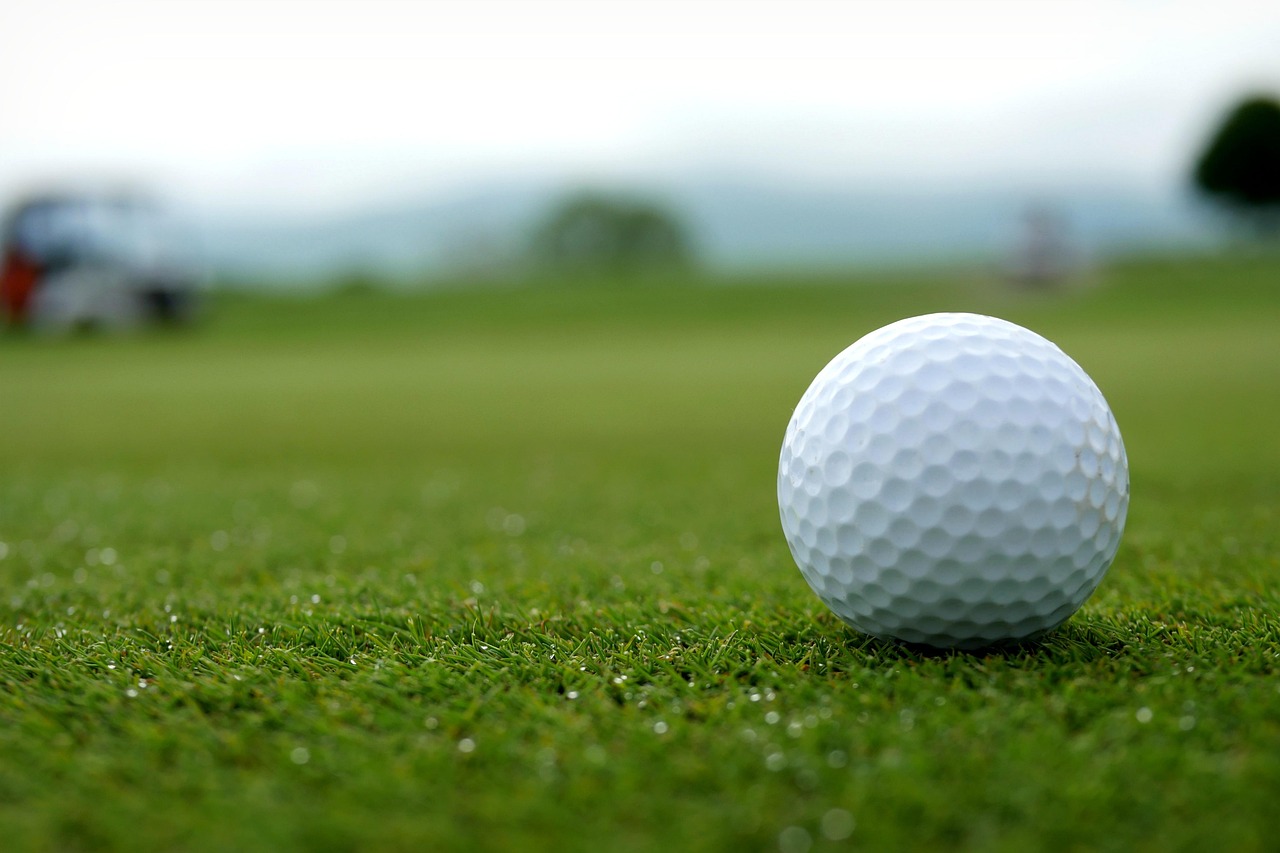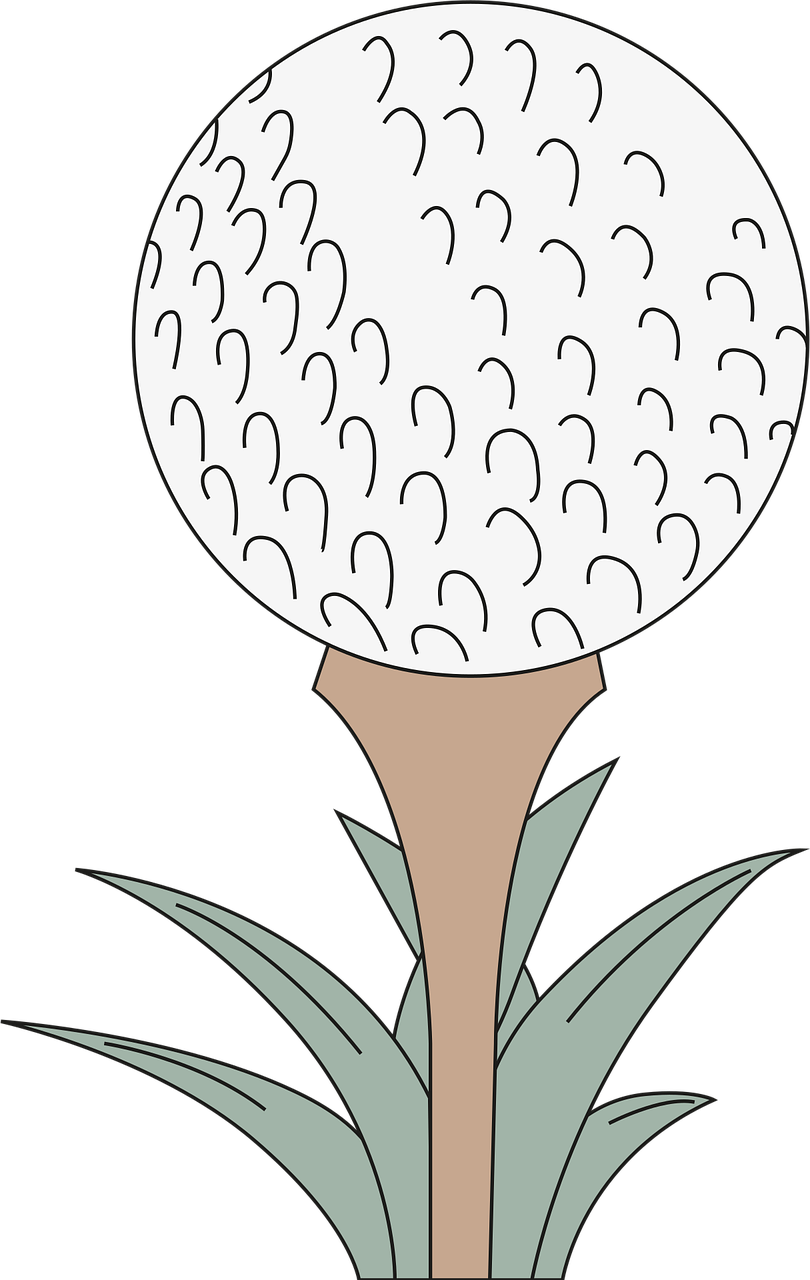Are you finding it hard to get consistent distance and feel because your swing speed is on the slower side?
What Are The Best Golf Balls For Slower Swing Speeds?
You want a golf ball that helps you maximize distance while still giving you enough feel and control around the greens. This article breaks down what matters for slower swing speeds and gives practical recommendations so you can choose with confidence.
How Your Swing Speed Affects Ball Performance
Your swing speed is one of the most important factors in how a golf ball behaves. Knowing how speed interacts with compression, construction, and cover materials will help you select a ball that performs for your game.
Why compression matters for slower swing speeds
Compression tells you how much the ball deforms when struck; lower-compression balls compress more easily. If your swing speed is slower, a lower-compression ball will generally allow the ball to compress properly at impact, which helps transfer energy efficiently and increases distance.
How launch and spin change with swing speed
At slower swing speeds you typically need more help getting the ball into the air, which means you want a ball that promotes a higher launch without producing excessive spin off the driver. Too much spin can reduce distance and cause ballooning, while too little spin can make it hard to stop the ball on approach shots.
The role of cover material and feel
The cover material (Surlyn, ionomer, urethane) affects feel, spin on short shots, and durability. For a slower swinger you’ll often prefer a softer-feeling cover for better short-game feedback, but you should balance that against your need for low driver spin and maximum carry.
Ball construction: 2-piece versus multi-layer
Two-piece balls usually have a soft core and a durable cover, offering distance and low spin—often a good match for slower swings. Multi-layer balls (3-, 4-, or 5-piece) can offer more spin control and workability, but some tour-style multi-layer balls require higher swing speeds to fully benefit.
What To Look For When Choosing Balls for Slower Swing Speeds
Choosing the right ball means matching ball characteristics to your priorities: distance, feel, greenside spin, or price. You’ll want to think through a few key traits.
- Low to mid compression: This helps you get more energy transfer at lower swing speeds and can increase ball speed.
- Lower driver spin: For many slower swingers, minimizing driver spin is important to gain roll and avoid ballooning.
- Softer cover for feel: Urethane or soft ionomer covers will feel better on chips and putts.
- Simpler construction: Two-piece and some three-piece models are often best because they’re optimized for distance and forgiveness.

Compression Ratings and How They Relate to Your Swing Speed
Compression ratings can be confusing, but you can use a simple framework to match ball compression to your swing speed. Compression scales vary by manufacturer, but the principle is the same: lower compression for slower swing speeds.
| Swing Speed (Driver) | Compression Range to Consider | Typical Benefits |
|---|---|---|
| Under 75 mph | Very low to low (approx. 20–50) | Easier compression, higher launch, maximum carry |
| 75–85 mph | Low to mid (approx. 40–60) | Balanced distance and feel, better spin control |
| 85–95 mph | Mid compression (approx. 50–70) | More control with still good distance |
| Above 95 mph | Mid to high (approx. 60–90+) | Full use of multi-layer performance and spin control |
Use these ranges as a guideline rather than a strict rule. If you’re unsure of your swing speed, many driving ranges and launch monitors will provide a reading, or you can get a quick check during a lesson.
How to Measure Which Ball Works Best for You
Testing is the best way to know what ball suits you, and you don’t need a pro shop fitting to learn a lot. Use a consistent routine and compare a few models in similar conditions.
- Hit at least five shots with each ball model from the tee and from 150–200 yards to assess carry, dispersion, and feel.
- Note ball speed and launch characteristics if you have access to a launch monitor.
- Pay attention to approach shots—did the ball stop quicker? Did you get good spin and feel around the green?
- Check putting feel: some balls feel softer and roll truer on the green.
A simple on-course test you can do today
Pick three candidate balls and play a 9- or 18-hole round using one ball model per 3–6 holes, rotating through. Keep an on-course notebook: distance on par-3s, approach shot stopping power, and putt feel. After the test, choose the ball that gives the best combination of distance and scoring control.

Top Golf Balls for Slower Swing Speeds (Quick Comparison)
Below is a practical table of popular golf balls that many slower swingers prefer. These represent solid choices across price points and playing priorities.
| Ball Model | Construction | Best For | Feel | Typical Strength |
|---|---|---|---|---|
| Wilson Staff Duo Soft | 2-piece | Pure softness & distance | Extremely soft | Very low compression, great for very slow swings |
| Callaway Supersoft | 2-piece | Soft feel + distance | Very soft | Low compression, durable |
| Titleist Tour Soft | 2-piece / soft core | Balanced tour feel with easier compression | Soft-medium | Good for slower players wanting control |
| Srixon Soft Feel | 2-piece | All-around playability | Soft | Forgiving and good green-side feel |
| Bridgestone e6 | 2-piece | Low spin, straighter flight | Soft-medium | Designed for smoother launch and forgiveness |
| TaylorMade Soft Response | 2-piece | Distance + comfortable feel | Soft | Low compression, easy launch |
| Vice Pro Soft | 2-piece / low-compression variant | Value + performance | Soft | Reasonable price for quality performance |
| Kirkland Signature (Costco) | 3-piece (similar feel to premium) | Value | Medium-soft | Good durability and distance for price |
Each of these balls tends to favor lower-compression cores and forgiving flight paths—qualities you’ll appreciate if your swing speed is slower.
Detailed Reviews and Who Should Use Them
Below you’ll find more detailed notes on each ball so you can match characteristics to your game and budget.
Wilson Staff Duo Soft — Best for Pure Softness and Easy Compression
If feel is a top priority and your swing speed is quite slow, the Duo Soft gives you an extremely soft impact and easy launch. You’ll likely notice higher launch and good carry off the tee, and the cover provides a pleasant feel around the greens.
- Benefits: Very low compression, excellent for players under ~85 mph, soft putter feel.
- Considerations: Less spin on approach compared with urethane tour balls, but that’s often a positive for lower-spin driver shots.
Callaway Supersoft — Best for Soft Feel and Straight Distance
Supersoft is a favorite for golfers seeking a comfortable feel without sacrificing distance. It’s designed to compress easily and produce a high launch, which helps with carry.
- Benefits: Good value and consistent performance, comfortable feel on short shots and putts.
- Considerations: Durability is solid but not best-in-class for scuff resistance.
Titleist Tour Soft — Best Overall Soft Performance for Slower Players
Tour Soft bridges the gap between soft feel and a more refined ball profile. It gives you better short-game control than many two-piece balls while still being friendly to slower swing speeds.
- Benefits: Balanced feel, better wedge spin than most two-piece models, reliable flight.
- Considerations: Slightly higher price than basic distance balls, but closer to premium performance.
Srixon Soft Feel — Best for All-Around Playability
The Srixon Soft Feel is forgiving and maintains a pleasing greenside feel. It’s a good all-around ball that many recreational players enjoy for its predictable behavior.
- Benefits: Good mixture of distance and feel, reliable in different conditions.
- Considerations: Not as low-compression as some ultra-soft balls, but often hits the sweet spot for many slower swing players.
Bridgestone e6 — Best for Reduced Spin and Straighter Shots
Bridgestone e6 focuses on lower spin and straighter ball flights, which is extremely helpful if you struggle with a slice or fade that kills distance. It also launches well for slower swings.
- Benefits: More roll-out, straighter flight, and forgiving performance.
- Considerations: Less greenside spin than urethane-covered balls.
TaylorMade Soft Response — Best for Comfort and Distance
TaylorMade’s Soft Response gives you distance with a softer feel. It’s designed to be a forgiving two-piece ball that helps slower swingers maximize carry.
- Benefits: Strong off the tee, soft feel on short shots and putts.
- Considerations: If you want tour-level short-game spin, you may prefer a urethane cover—Soft Response is more about distance and feel.
Vice Pro Soft — Best Value with Performance in Mind
Vice balls often provide premium feel and construction at a friendlier price point. The Pro Soft variant is tuned for lower compression and comfortable feel.
- Benefits: Affordable and consistent; frequently lauded for value-to-performance ratio.
- Considerations: Availability may vary by region, and you might need to buy online.
Kirkland Signature — Best Value from Costco
If you want maximum bang for your buck, Kirkland Signature balls offer surprisingly good performance at a low price. Many golfers report good distance and feel for the cost.
- Benefits: Excellent price-to-performance ratio; good for practice and rounds where you don’t want to lose expensive balls.
- Considerations: Not a specialized low-compression label, but performance tends to favor mid-to-low compression play.

Ball Selection by Swing-Speed Bracket
To make this practical, here are specific suggestions based on your driver swing speed. Use this as guidance, and test to confirm.
- Under 75 mph: Wilson Staff Duo Soft, Callaway Supersoft, TaylorMade Soft Response. Focus on very low compression to maximize launch and distance.
- 75–85 mph: Srixon Soft Feel, Titleist Tour Soft, Bridgestone e6. This range can benefit from slightly firmer low-compression cores that offer more control while still being forgiving.
- 85–95 mph: If you’re in this bracket, you can experiment with mid-compression balls and some multi-layer designs; Titleist Tour Soft and some premium mid-compression models could work.
- Over 95 mph: You’ll generally be able to use higher-compression, multi-layer premium balls to gain control and spin without sacrificing distance.
Short-Game and Putting Considerations
Slower swingers often make large percentage gains by choosing a ball that is both forgiving off the tee and controllable around the green. You don’t have to sacrifice feel for distance if you pick wisely.
- For chips and pitches: A softer cover (urethane or soft ionomer) will give you better feedback and bite on greens.
- For putting: Softer balls generally feel better on the putter and can help with roll and sound preference. Try a couple of balls for putting only to see which feels truest to your stroke.
- Trade-offs: Low-compression distance balls may reduce wedge spin slightly. If you rely on backspin to hold greens, test to see whether you need a slightly firmer or urethane ball.

Weather, Temperature and Condition Factors
Air temperature, humidity, and course firmness change how any ball performs. You can optimize your choice for the most common conditions you play in.
- Cold weather: Balls get firmer in cold temperatures, so choosing a very low-compression model helps maintain distance in winter.
- Soft fairways/greens: In soft conditions you might want slightly lower driver spin for more predictable roll-out, though softer conditions reduce roll anyway.
- Wet conditions: Durability becomes more relevant; look for covers that resist scuffing and maintain feel when damp.
Testing Protocol: How to Run a Practical Ball Test
You can perform a meaningful ball test in a single practice session with a launch monitor or just on the range.
- Select 3–4 balls to test.
- Warm up thoroughly with each ball, hitting 8–10 shots per model to get reliable averages.
- Record average ball speed, carry distance, launch angle, and spin if you have a launch monitor.
- Note dispersion and feel subjectively: which ball kept your shots straighter? Which ball had better short-game performance?
- Play a few holes with the top two choices before buying a sleeve.
Using a consistent routine ensures you don’t conflate poor swing mechanics with ball performance.

Buying Strategy and Cost Considerations
Ball cost matters, especially if you lose balls often. You can balance price and performance with a simple strategy.
- Buy a mixed sleeve first: Buy one sleeve each of 2–3 candidate balls to test on-course.
- Once you choose, buy a dozen or two of the chosen ball in bulk for savings.
- Keep an inexpensive ball for practice rounds and a higher-performing ball for tournaments or when you’re trying to score.
Common Myths and Questions
Here are crisp answers to frequent misconceptions you’ll encounter while choosing golf balls.
Myth: Lower compression always equals more distance
Not always. Lower compression helps slower swings compress the ball, which can increase ball speed and launch. But if the ball produces too much spin or lacks the right construction for your swing, you may not see improved overall distance.
Myth: Premium tour balls are always better for everyone
Tour balls are designed for higher swing speeds and to provide more spin and feel for players who can fully compress them. If your swing speed is moderate to slow, many tour balls won’t give you the distance benefits you want.
Question: Will a low-compression ball cure my slice?
A low-compression ball can help if your slice is partly due to ballooning or too much backspin, but it won’t change your swing path or clubface angle. Work on technique while choosing a ball that reduces spin off the driver.
Troubleshooting: If You’re Not Getting Distance or Control
If you try a low-compression ball and still don’t see improved distance, check these factors first:
- Ball condition: Worn or cut balls perform poorly.
- Club fitting: Shafts, loft, and lie can affect launch and carry; a fitted driver may help you more than switching balls.
- Swing fundamentals: A solid impact position and consistent strike location (center of the clubface) are crucial for extracting the ball’s potential.
- Tee height and ball position: These small adjustments can influence launch and spin dramatically.
Final Recommendations and Quick Picks
To summarize in a practical way, here are recommended balls based on priority and swing speed:
- For maximum value and forgiving performance: Kirkland Signature or Vice Pro Soft.
- For the softest feel and best launch at very low swing speeds: Wilson Staff Duo Soft, Callaway Supersoft.
- For a balance of feel and improved short-game control: Titleist Tour Soft, Srixon Soft Feel.
- For straighter flight and lower driver spin: Bridgestone e6.
- For comfortable feel and distance with a mainstream brand: TaylorMade Soft Response.
If you want a short, actionable plan: choose two balls from the list (one budget-friendly, one slightly higher-end), test them for a few rounds and on the range, and then commit to the one that gives you better carry and short-game confidence.
Frequently Asked Questions
Here are concise answers to some last-minute questions you might have.
- How much can a ball change my distance? A well-matched ball can alter carry distance by several yards on average; it can be more if your previous ball was mismatched to your swing.
- Should I use different balls for driving and putting? Some players use a distance ball off the tee and a softer ball for approach/putting, but most prefer the consistency of using the same ball all round.
- Can you mix brands in a tournament? Check local rules and tournament regulations—using different ball types during a round is generally allowed, but it’s best to use one model for consistency.
Closing Thoughts
Selecting the right golf ball for a slower swing speed is about matching ball characteristics to your priorities: distance, feel, control, and budget. A low- to mid-compression ball with a forgiving construction is usually the best starting point. Test a few options under real playing conditions, pay attention to carry, launch, and greenside behavior, and then commit to the ball that helps you score better and enjoy the game more.
If you’d like, tell me your approximate driver swing speed and what aspects of your game you want to improve (distance, accuracy, short game), and I’ll recommend two or three specific balls to try.








